As the Superseries enters the homestretch, our roaming Badmintonphoto photographer gives us his firsthand recollections of the events that marked the tour’s resumption after the Olympic break.
Story and photos by Yves Lacroix
Despite all the fuss and prestige surrounding the Olympic Games, I am always anxious to go back to the Superseries circuit and renew with some of my favourite tournaments. Since their birth in 2007, the China Masters and Japan Open are always the first ones to break the Olympic… break.
Since 2008, the China Masters have been held in Changzhou, a few hours away from Shanghai. Going to China is no easy task for journalists and photographers. Firstly, you need to get a special visa and that process can easily become a bit tedious. Secondly, you need to arrange transportation from Shanghai – or wherever you land at – to Changzhou. These arrangements are necessary because Changzhou’s airport offers very few international flights.
Luckily, the tournament organizers offer a private transportation in a car or small van. When I’m lucky, I can also rely on the kindness of my colleagues from the TV crew – Ruvian, Gillian, Nick and all the other great guys – to share a lift with them. These moments are always welcome since we finally get to have long conservations about our common passion, i.e. badminton.
This time, after landing at Pudong in Shanghai a very nice surprise awaited me as my dear friend Jin Meng Chi – a volunteer at the 2011 China Masters – arranged to be my accompanying guide from Shanghai to Changzhou. I was deeply touched by her desire to greet me despite a very tight schedule. Thanks again for that very touching gesture, Meng Chi.
Rest for the weary, a chance for the hungry
Physical and mental tiredness and empty pockets seem to be the main reasons but undoubtedly, players tend to take a break from post-Olympic tournaments every four years. It was once again the case at this year’s China Masters. Apart from men’s singles, the draws were quite empty and the first days of competition were quite shortened. For example, Wednesdays at Superseries events usually showcase up to 80 matches from early morning until very late at night. This year, due to the weakened draws, only 26 matches were scheduled and play ended around 3:15 PM. Needless to say, that was a nice change to be able to get some decent sleep during a major event.
In any case, with the absence of most of the sport’s top stars – including many of the top Chinese players – the set was scene for new players to emerge. Some of the youngsters made the most of the situation, as did many Indian players such as 17-year old PV Sindhu, who ousted London gold medallist Li Xuerui and managed to get to the semi-finals in women’s singles. Very impressive, watch out for her! Minatsu Mitani also made a good run after beating two Wangs – Lin and Shixian – in a row before bowing to Sapsiree Taerattanachai.
We were unfortunately once again treated to a walkover between Chinese players in the semi-finals when Du Pengyu reported an injury to the officials. Due to the low turnout of non-Chinese players, it was not surprising that 8 of 10 finalists were Chinese. Only Hu Yun from Hong Kong – although from mainland China himself – and Japanese men’s doubles duo composed of Hiroyuki Endo and Kenichi Hayakawa were able to offer different flags on the finals line-up.
The men’s doubles final between that same Japanese duo and Chai Biao and Zhang Nan was played right against a background of the international crisis between China and Japan over disputed islands. One could hear a bit of hostility towards the Japanese team during the match but nothing serious happened.
During the tournament, word came out that the Chinese players would not be attending the Japan Open. It took a while to have that rumour confirmed and contradictory reasons were given by the players for their anticipated no-show in Tokyo.
Finally, two days before the beginning of the tournament in Japan, Li Yongbo finally confirmed to the press that his team was not going and, not surprisingly, no reason was given and the Chinese media asked no questions. Due to the massive withdrawal, the BWF quickly proceeded to redo the draws and a new scene was set for the 2012 Yonex Japan Open.
Another country, another draw, another venue
This year’s edition was relocated to the Yoyogi National Gymnasium due to the Tokyo Metropolitan Gymnasium being under renovation. ‘Under renovation? How come?’ I thought. From the inside as well as from the outside, the TMG seems to be in perfect order and it offers a rather modern look. I was really surprised to find out that the stadium was built in 1954 as it looks and feels at least half its age. The Japanese surely take good care of their infrastructure!
At the end of the qualifying day, a nice welcome dinner for players and media at the official hotel is usually preceded by a press conference showcasing popular Yonex players (Lee Chong Wei, Peter Gade, etc.) and a selection of Japanese players. The many cameramen and photographers on hand quietly fight to find the best possible spots.
Despite the Olympic silver won by Fujii and Kakiiwa in women’s doubles and the imminent retirement of Peter Gade, most of the media attention was focused on the retirement of mixed doubles duo of Shintaro Ikeda and Reiko Shiota. Every time Shiota smiled or laughed, you could hear an uncontrolled clicking spree from all the cameras, including mine, I have to admit. This would be only the prelude to a week full of highly mediatized events involving Shiota.
On court as well, many memorable encounters from the Yonex Open Japan 2012 [sic] immediately spring to mind. Hu Yun, after his final in China, once again had an incredible run before being stopped by Boonsak Ponsana in the semis. My favourite picture of the tournament was when I captured Boonsak’s expression of joy and relief at the end of one of the best matches I witnessed this year. It is always nice to see players showing some genuine emotion on court!
Most of the other on court highlights involve Japanese players. There was, of course, Fujii and Kakiiwa crashing out to the young pairing of Yuriko Miki and Koharu Yonemoto in the second round. On a sad note, the silver medallists announced, at a press conference one hour later, the end of their partnership.
Also, how could one forget Poon Lok Yan and Tse Ying Suet’s long-awaited first Superseries title? The Hong Kong pair had to beat four Japanese pairs to obtain the right to climb on the first step of the women’s doubles podium. Well done, girls!
Since no Japanese players had ever won a title in the 31-year old history of the Japan Open, hopes were high for Eriko Hirose and the duo of Mami-Naito, who were the only ones to make it to the Sunday line-up. Hirose, who survived a match point against her in the second round, was obviously delighted to make it so far. After one of her wins in the latter stages of the tournament, she went up to one of my colleagues in the media who speaks Japanese and said with a big smile ‘Did you see? I won my match!’ Such candour and pure joy!
Eriko, however, had to meet Tai Tzu Ying who played a wonderful final with some of the most extravagant shots I’ve seen in women’s singles. I was happy for the super talented youngster but felt bad for Eriko, who couldn’t make the most of such a golden opportunity to grab a first home title for Japan.
Lee Chong Wei won his title in ten easy games, once again proving he really is in a class above the rest of the clan. In fact, he had just finished winning his semi-final match on the TV court when he just leaned over to ask me for a personal favour as if he had just finished training. The fact that he can be so relaxed during a competition, for some reason, will always amaze me more than his pure talent.
The media and its superstars
However, needless to say, most of the media attention on and off court was on superstar Reiko Shiota. She gave photographers many opportunities to shoot her in action when she and mixed doubles partner Shintaro Ikeda managed to reach the semi-finals. That match would prove to be Reiko’s very last one on the international scene as she had announced that this year’s Japan Open would be her career’s final bout.
Shiota saluted the crowd in tears before heading to a super-packed press conference in an overcrowded media centre. The photographers and film crews were hunting for emotion and their wish was granted when Shiota burst into tears, her emotion making the headlines in the Japanese media, of course.
As a photographer, finding spots in such a huge media event is a challenge but a gratifying one, especially when gentlemen such as Shintaro Ikeda and Peter Gade even take the time send their positive comments. Gade’s were even more appreciated as I realized it was probably the last time I was going to see him play. I then realized the first time I saw him play was 17 years ago, at the 1995 Danish Open, when I was way younger than Peter himself now is. I might as well take this opportunity to say I always appreciated his very professional approach with the media as well as with the fans. I owe him tremendous respect for that.
Just to show how popular Gade is in Tokyo, the tournament organizers arranged a nice ceremony for his retirement right before the finals. Peter, accompanied by his family, addressed the crowd and thanked them for their kind support during all these years.
A similar ceremony was held for Reiko Shiota after the finals. It was a very touching moment indeed as the spectators were all given pink signs stating their love for the departing player. After several testimonies from friends and team-mates, she made a speech and a last lap of honour to salute her many fans.
From the Japan Open to…Japan
The 2012 Japan Open over, a scheduling mishap gave me the chance to stay one extra week on Tokyo. I unfortunately never have the time to explore the city when I am on an assignment and taking my week of vacation to correct that was when of the best decisions I made in a very long time.
Despite its size, Tokyo is one of the most relaxing and pleasant cities I have ever visited. How nice it is to spend an entire week doing nothing but taking pictures, seeing friends, shopping, and taking long walks in a peaceful city.
My extra week in Tokyo also provided me with the chance of attending the September 29 Solibad Day flashmob with my Japanese friends. Under a perfect sky and +30 weather, a very energetic Shintaro Ikeda led the choreography before handing out nice personal gifts to some of the participants.
Twenty-four hours later, I was already on my way back to Montréal, my head once again filled with great memories…
![Memories of…the China Masters and Japan Open As the Superseries enters the homestretch, our roaming Badmintonphoto photographer gives us his firsthand recollections of the events that marked the tour’s resumption after the Olympic break. Story and photos […]](https://www.badzine.net/wp-content/uploads/Newsflash-thumbnail.png)
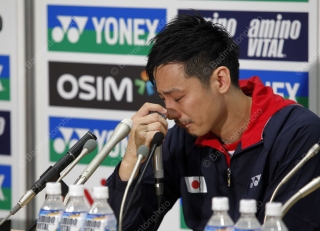


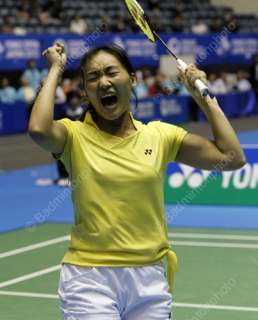
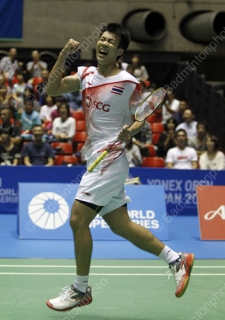
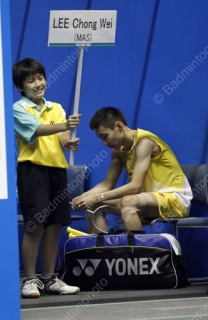
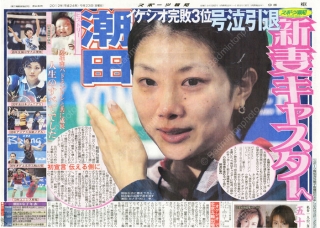
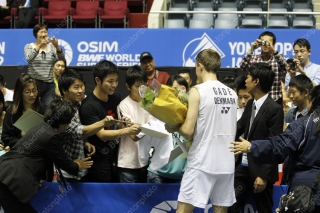
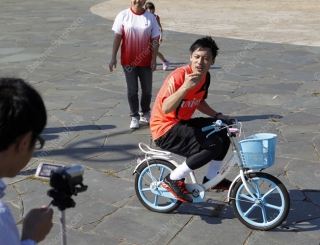

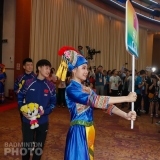
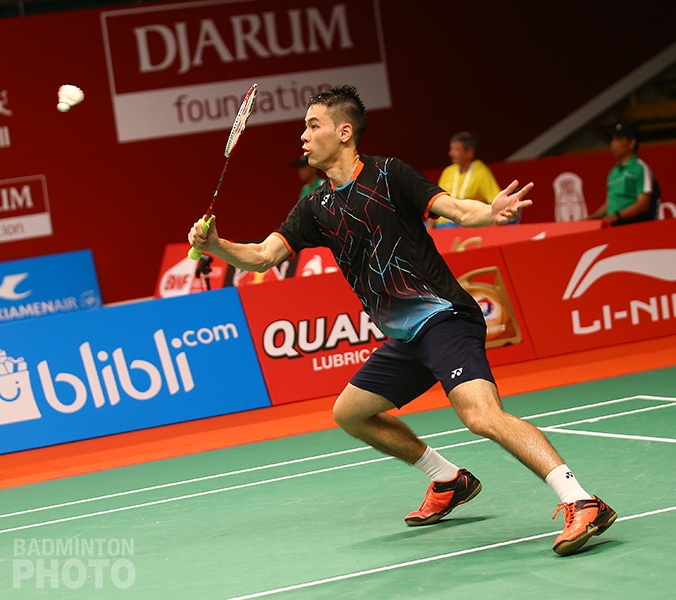
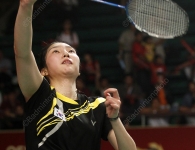
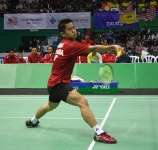
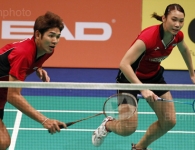
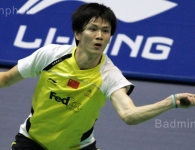
Leave a Reply